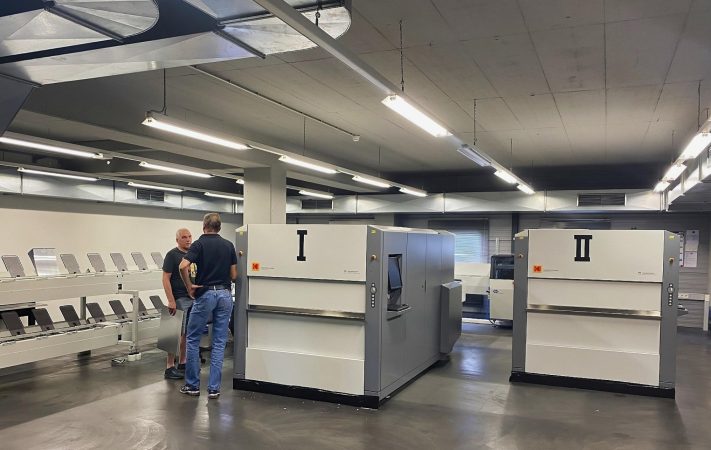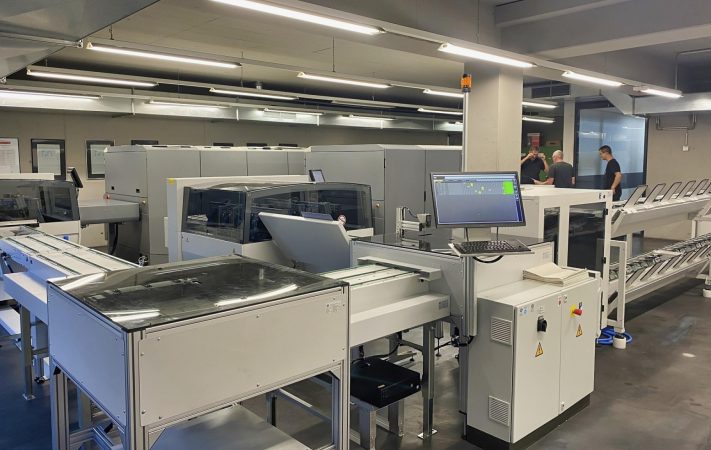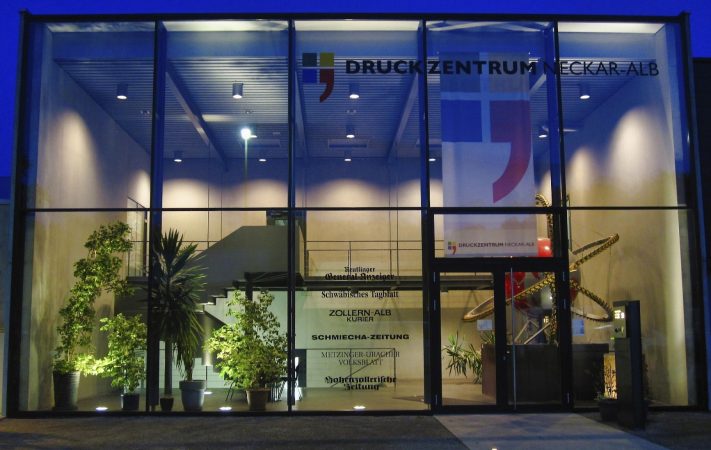Reutlingen, Germany
Druckzentrum Neckar-Alb
Process-free platemaking enables leading German newspaper printer to streamline their print and unlock more profit
Company
Established in 2000 by six publishers in southwest Germany, Druckzentrum Neckar-Alb specializes in newspaper offset printing
Challenge
Upgrade ageing equipment and streamline platesetting process for more efficient, reliable and profitable production
Kodak Solution
SONORA Process Free Plates
Introduction
As one of southwest Germany’s largest newspaper printers, Druckzentrum Neckar-Alb is fully aware of the challenges the industry presents. To run a profitable operation without compromising on output or reliability, they knew they had to upgrade their system. Switching to KODAK SONORA XTRA Process Free Plates has given them full end-to-end control over their platemaking – and new paths to profitability.
The Business Need
Newspaper printing is a fast-evolving business. Declining circulations. Rapidly rising paper, energy and material costs. A need to stay competitive in the face of change. It’s no wonder printers worldwide are having to evolve fast; seeking ways to cut costs and work more efficiently, while maintaining quality and reliability.
With a portfolio of eleven daily titles, seven weeklies, six weekly gazettes and numerous third-party products, Druckzentrum Neckar-Alb depends on its equipment to run at maximum efficiency. So when the company’s existing set-up began nearing the end of its serviceable lifespan, they saw an opportunity. Now was the time to invest to make their whole production process more stable, streamlined and profitable – fit for the modern newspaper age.
They also wanted to address concerns over their own environmental footprint, reducing energy use, water and materials, while minimizing disruption to their high-volume, round-the-clock workload.
The Kodak Solution
In 2022, Druckzentrum Neckar-Alb upgraded to two new KODAK GENERATION NEWS Platesetters, following their initial two-year trial on SONORA XTRA Plates.
For their new machines, they chose a full automated Z-Speed version which offered throughput of 300 plates per hour for the 346 x 530 mm broadsheet format. Each platesetter was equipped with four plate cassettes capable of holding up to 1,600 plates each, which allowed several days of use before needing to be changed.
The transition process was supervised by a Kodak technician team, and the new process free plates slotted easily into their existing production pipeline with only a few minor changes to settings and workflow.
Operators found their initial concerns over registration and plate positioning were unfounded: the innovative camera system of the punch units enabled them to capture the registration marks on the plates with no problem, and the two platesetters ran much cleaner, faster and more reliably than their previous models.
By early May 2022, Druckzentrum Neckar-Alb’s brand new, 100% process-free platemaking system was up and running and making a significant difference.
The Outcome
With run lengths of up to 400,000 impressions in coldset web offset, the new SONORA XTRA Plates far exceeded Druckzentrum Neckar-Alb's needs, leaving huge spare capacity for future growth.
The process free plates offered improved image contrast, scratch resistance, speed and durability, and also enabled the company to remove the two old plate processors which were now redundant — freeing up much-needed space in the CTP room. And with no need for costly chemicals and no residual liquids to be disposed of, the new machines and process free plates offered obvious environmental and cost benefits.
Even better, with no clean-out required, Druckzentrum Neckar-Alb has benefited from significant savings on maintenance and repair — estimated at between €15,000 and €20,000 per year. The company has also been able to achieve impressive efficiency gains, with features such as automated platesetting, loading and unloading freeing up press shift supervisors for other tasks.
Contact Us
Contact a Kodak sales representative to learn how our products and solutions can help grow your business.





